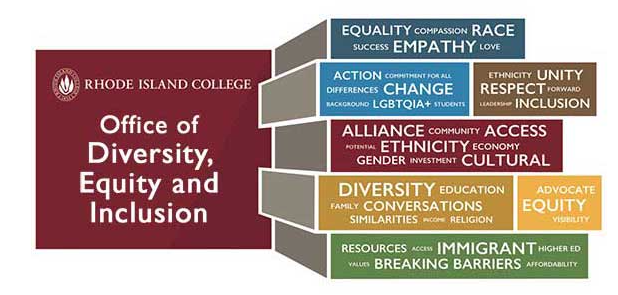John Sailer writes in The Free Press on the rapid rise of the “diversity, equity, and inclusion” bureaucracy in American higher education:
The principles commonly known as “diversity, equity, and inclusion” (DEI) are meant to sound like a promise to provide welcome and opportunity to all on campus. And to the ordinary American, those values sound virtuous and unobjectionable.
But many working in academia increasingly understand that they instead imply a set of controversial political and social views. And that in order to advance in their careers, they must demonstrate fealty to vague and ever-expanding DEI demands and to the people who enforce them. Failing to comply, or expressing doubt or concern, means risking career ruin.
In a short time, DEI imperatives have spawned a growing bureaucracy that holds enormous power within universities. The ranks of DEI vice presidents, deans, and officers are ever-growing — Princeton has more than 70 administrators devoted to DEI; Ohio State has 132. They now take part in dictating things like hiring, promotion, tenure, and research funding.
More significantly, the concepts of DEI have become guiding principles in higher education, valued as equal to or even more important than the basic function of the university: the rigorous pursuit of truth. Summarizing its hiring practices, for example, UC Berkeley’s College of Engineering declared that “excellence in advancing equity and inclusion must be considered on par with excellence in research and teaching”. Likewise, in an article describing their “cultural change initiative”, several deans at Mount Sinai’s Icahn School of Medicine declared: “There is no priority in medical education that is more important than addressing and eliminating racism and bias.”
DEI has also become a priority for many of the organizations that accredit universities. Last year, the Council for Higher Education Accreditation, along with several other university accrediting bodies, adopted its own DEI statement, proclaiming that “the rich values of diversity, equity and inclusion are inextricably linked to quality assurance in higher education”. These accreditors, in turn, pressure universities and schools into adopting DEI measures.
Much of this happened by fiat, with little discussion. While interviewing more than two dozen professors for this article, I was told repeatedly that few within academia dare express their skepticism about DEI. Many professors who are privately critical of DEI declined to speak even anonymously for fear of professional consequences.
The Invention of DEI
How has this fundamental shift taken place? Gradually, then all at once.
For decades, university administrators have emphasized their commitment to racial diversity. In 1978, Supreme Court Justice Lewis Powell delivered the court’s opinion in Regents of the University of California v. Bakke, taking up the question of racial preferences in higher education. Powell argued that racial preferences in admissions — in other words, affirmative action — could be justified on the basis of diversity, broadly defined. Colleges and universities were happy to adopt his reasoning, and by the 1980s, diversity was a popular rallying cry among university administrators.
By the 2010s, as the number of college administrators ballooned, this commitment to diversity was often backed by bureaucracies that bore such titles as “Inclusive Excellence” or “Diversity and Belonging”. Around 2013, the University of California system — which governs six of the nation’s top 50 ranked universities — began to experiment with mandatory diversity statements in hiring. Diversity statements became a standard requirement in the system by the end of the decade. The University of Texas at Austin in 2018 published a University Diversity and Inclusion Action Plan, which began to embed diversity committees throughout the university.
Then came the Black Lives Matter demonstrations of 2020. The response on campus was a virtual Cambrian explosion of DEI policies. Any institution that hadn’t previously been on board was pressured to make large-scale commitments to DEI. Those already committed redoubled their efforts. UT Austin created a Strategic Plan for Faculty Diversity, Equity, and Inclusivity, calling for consideration of faculty members’ contributions to DEI when considering merit raises and promotion.
White Coats For Black Lives, a medical student organization that calls for the dismantling of prisons, police, capitalism, and patent law, successfully petitioned medical schools around the country to adopt similar plans, including at UNC–Chapel Hill, Oregon Health & Science University, and Columbia University. In some cases, administrators even asked White Coats For Black Lives members to help craft the new plans.
All at once, policies that previously seemed extreme — like DEI requirements for tenure and mandatory education in Critical Race Theory — became widespread.




